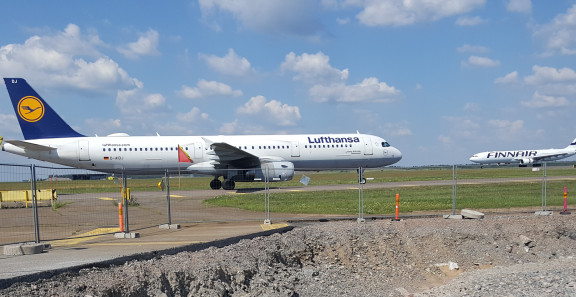This alliance project was quite a learning process for Sitowise’s designers, who received top marks from Finavia.
When general design for the Helsinki-Vantaa Airport apron extension was launched in 2014, both the client, Finavia, and Sitowise’s designers were facing a new challenge
“In its previous projects, Finavia had handled the entire design process itself. This was the first project that we’d commissioned from a design agency from electrical design upwards,” says Finavia’s Project Director Martti Nurminen.
And at the general design stage, an airport was still quite an unusual experience for the designers as well.
However, Sitowise was flexible and willing to enhance its own design expertise.
-Martti Nurminen
A close-knit core team
Pasi Pekkala, Sitowise’s principal designer, coordinated the overall design process with Finavia’s design managers.
Pekkala says that, in practice, an exceptionally close-knit team of about 20 people were responsible for the apron design throughout the entire project, although many specialists were also consulted along the way.
We handled the design process with a much smaller team than we usually would in a regular project. The project designers were able to invest a great deal of time in this project, and that was extremely important for the design work.
Pasi Pekkala
All aspects of design were based on data modelling.
One of the first alliance projects
Although the Helsinki-Vantaa Airport apron extension project will go down in history as one of Sitowise’s first alliance projects, it was not an ordinary alliance in the modern sense, as the implementer (Destia) was not chosen until the general design had been completed. Therefore, the actual alliance was only launched in August 2015.
During this project, Finavia was still seeking the best forms of cooperation for an alliance. In the apron extension project, the alliance only had a five-month development phase. With hindsight, this was definitely challengingly short for the service provider.
The apron extension was implemented as four separate contracts. To make sure that the project wasn’t lacking in challenges, the terminal building was also expanded at the same time. The design and implementation of both the terminal and the apron occurred in stages and to different schedules, and this occasionally posed difficult planning and scheduling dilemmas for the designers to resolve.
The very concept of an alliance project is that everyone pulls together as a single, unified team. Although a few creases in the cooperation process still needed ironing out during the first two phases of the contract, the alliance then gelled. “We’ve internalised the working methods. Getting things done has become easier and more efficient,” says Pekkala.
“Our dialogue was fruitful during phases three and four, and we made it over the finish line as a team. They were great performances!”
The Big Room as a meeting place
The apron extension project also provided an opportunity to study the Big Room approach. The project’s Big Room was located next to the construction site, so that the people working there could easily check how work was progressing and investigate any problems in person. This saved a lot of time.
Although the Big Room may not have been an ideal environment for all of the design work, Pekkala says that he was working there four or five days a week during the busiest phase. “At least the Big Room was absolutely essential in terms of guaranteeing dialogue. A common workspace plays a key role in increasing both interaction and mutual trust between different parties.”
For Sitowise, the design of the apron extension was a truly multidisciplinary project that involved coordinating different types of technology being implemented at different locations. Sitowise was well prepared for the remote working skills required by the coronavirus pandemic, as project design was already being done simultaneously at the Helsinki-Vantaa Airport and offices in Kuopio, Tampere and Espoo.
A great success
The six-year project that posed so many challenges has now been completed – apart from the warranty period. It is therefore time to consider how well we did in the overall design process for our first airport project.
“The framework agreement required continual learning,” says Nurminen. “I think that happened and we achieved a good result. I’d say that the design work done for the alliance was very successful!”
